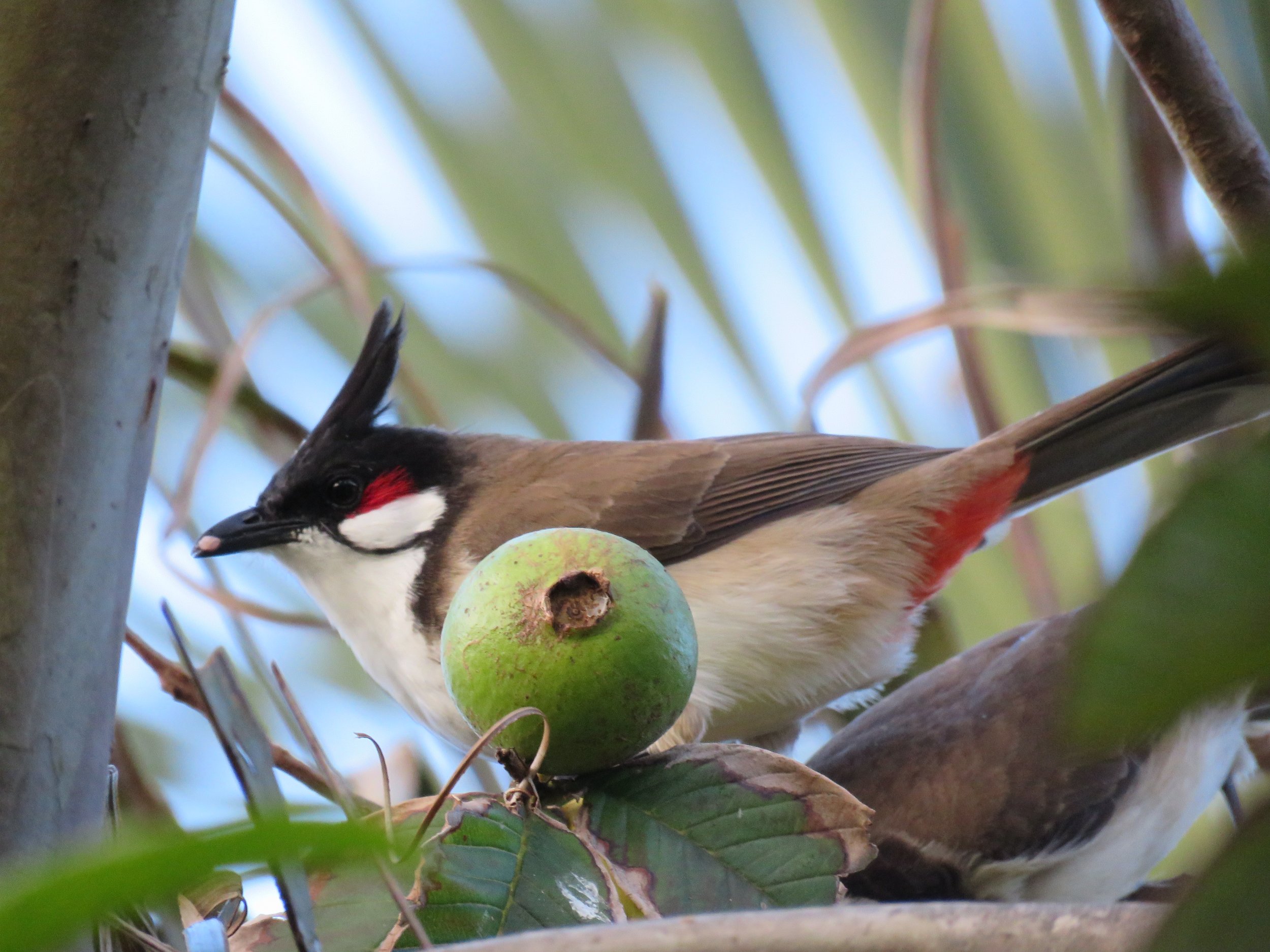
Something unusual has happened on the Hawaiian island of Oahu, where native birds have almost totally been replaced by invasive species.
In an unprecedented finding, researchers have discovered that the newcomers are now the only birds dispersing seeds across the island, and are thus playing an essential role in the local ecosystem, according to a study published in the journal Science Advances.
The authors of the study—representing several U.S. institutions—say that their results demonstrate how ecosystems in which introduced or invasive species dominate can effectively function in much the same way as those where native species are more prevalent.
"The Hawaiian Islands are known as both the 'extinction and invasive species capitals of the world,'" ecologist Jeferson Vizentin-Bugoni, lead author of the study from the University of Illinois at Urbana-Champaign, told Newsweek. "Nearly all of [Oahu's] native fruit-eating animals are extinct and seed dispersal—an essential process to maintain ecosystem functioning—is almost entirely dependent on a handful of introduced vertebrate dispersers, nearly all of which are birds.
"This is a sad history of the decline of native plants and birds but at the same time, Oahu offers an amazing opportunity to understand and anticipate what other ecosystems on Earth may experience if human-caused extinctions and biological invasions continue to increase," he said.
It's for this reason that the researchers decided to study the Hawaiian archipelago, which, being the most isolated in the world, is home to numerous unique plants and animals.
"We decided to study Oahu because there is no other environment like Hawaii," Corey Tarwater, another author of the study, from the University of Wyoming, told Newsweek. "You have this isolated archipelago that is more than 1,800 miles from the nearest continental land mass and is home to many endemic species."
"Despite representing only 0.2 percent of the land area of the U.S., almost one-third of the species on the U.S. Endangered and Threatened Species list are in Hawaii," she said. "Then you have introduced species from almost every continent and this mix of native species and non-native species from all over are interacting with each other and forming new communities."
Previous research has shown that the interactions between plants and animals in these "ecological communities" are particularly sensitive to invasive species or extinctions. However, this kind of research has tended to focus on areas dominated by native species, where these interactions have co-evolved over long periods of time.
To address this lack of knowledge in a world where human influence is seemingly ubiquitous, the researchers investigated how birds dispersed seeds on Oahu, in what is the first comprehensive study on species interaction in a novel ecosystem—a place where most species are non-native.

In total, the team identified more than 100,000 seeds that were collected from bird species across the island. Their subsequent analysis showed that native plants are almost entirely dependent on invasive bird species to disperse their seeds.
"The first major result is remarkable: There are no native bird species dispersing seeds of native plants on Oahu—the interactions are completely novel," Vizentin-Bugoni said. "This island was once highly diverse but then faced some of the highest rates of extinction on the planet—experts estimate that in the last 700 years, 77 species and subspecies of birds in the Hawaiian archipelago have gone extinct, accounting for 15 percent of bird extinctions worldwide."
Furthermore, the scientists found that species' interactions on the island bear a striking resemblance to complex and stable ecosystems around the world where native flora and fauna dominate. This suggests that novel ecological communities can arise in a relatively short time by quickly integrating invasive species.
"This has deep implications for the understanding of how natural complexity develops: the emergence of complex and stable networks in such a degraded ecosystem challenges the perception that co-evolution is a requirement for the emergence of complexity in interaction networks in nature," Vizentin-Bugoni said.
"Thus, our work brings both good and bad news: the good news is that even in a highly degraded ecosystem, species can arrange their interactions in a way that stability is increased," he said. "Furthermore, the introduced birds can disperse seeds of native plants. However, the bad news is that most seeds dispersed belong to introduced plants—around 94 percent of the total—and that species are very flexible to change their partners, which makes restoration challenging as the re-emergence of a native flora is hard to achieve."
According to the researchers, humans have long left their mark on the flora and fauna of the Hawaiian islands—with particularly dramatic changes occurring in the past 200 years because of extensive land use changes and species introductions.
"When Polynesians first settled onto the archipelago, they hunted the large flightless birds for food and introduced a number of plant species, including pigs," Jason Gleditsch, another author from Illinois at Urbana-Champaign, told Newsweek. "Later, when Europeans discovered the archipelago and began to trade with the Polynesians there, they introduced new plant species, rats and mongooses, and later settlement on the island brought with it many more species of plants, birds, livestock and pets."
"Of those animal introductions, cats, rats, pigs and goats were especially impactful. The rats and cats became the major predators of native birds, and the pigs and goats greatly altered the plant community through high levels of herbivory," he said. "Additionally, with the introduction of mosquitoes—in concert with the introduction of infected bird species—came the introduction of avian malaria. The native birds that did not evolve with avian malaria were very susceptible and populations plummeted."
Uncommon Knowledge
Newsweek is committed to challenging conventional wisdom and finding connections in the search for common ground.
Newsweek is committed to challenging conventional wisdom and finding connections in the search for common ground.
About the writer
Aristos is a Newsweek science reporter with the London, U.K., bureau. He reports on science and health topics, including; animal, ... Read more
To read how Newsweek uses AI as a newsroom tool, Click here.








